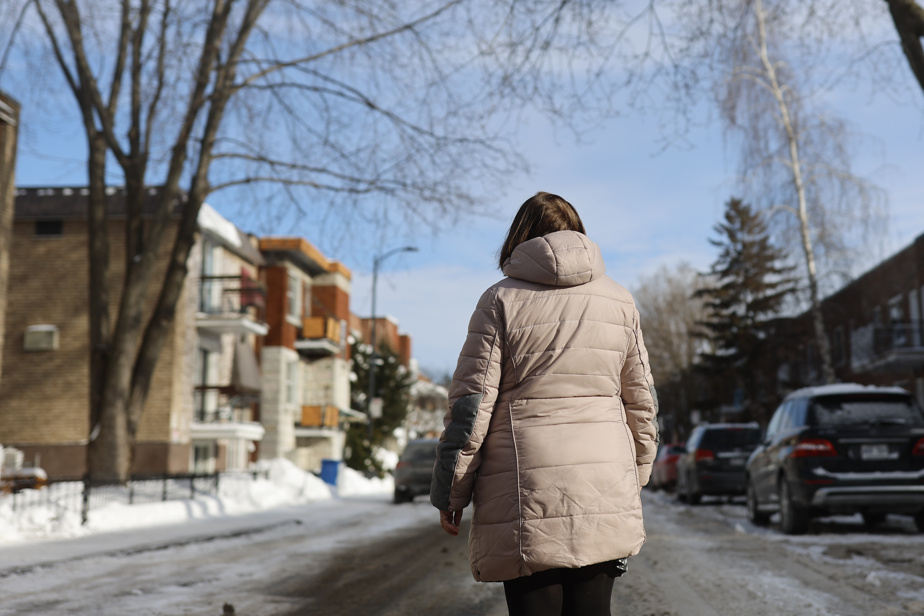Newly retired at the age of 59, Carole* has the impression of falling into a void since she no longer has her pay every two weeks. So much so that she has already claimed her QPP pension.
The situation
Before her mother passed away last fall, Carole*, single and childless, was already thinking of retiring because of the great pressure she was under at work. This event prompted her to take action.
Since she no longer has a fixed income, apart from the $1,040 per month that comes from the rent for her duplex, Carole has already applied for her pension from the Quebec Pension Plan (QPP) at age 60.
“My mother died at 88, but we don’t know what the future holds,” she explains over the phone. It seemed more advantageous to take it at 60. My sisters all took it at 60 and I won’t have any more income coming in. »
Carole does not have a pension plan from her former employer.
The new retiree therefore took out her calculator and imagined scenarios. Could she leave her Registered Retirement Savings Plans (RRSPs) in her investments and live on the interest paid to her in her savings account?
Of course, market concerns must be considered.
“I was about to retire and when I saw that my mutual funds had dropped by $70,000, I almost passed out,” Carole exclaims during the conversation.
“I ran to my cash register to see the person who takes care of my investments and I told him: I can’t take any risks, so you take my money out of that fund and freeze it in an investment guaranteed at 4% interest,” she says.
His mother, however, bequeathed a good sum of money to all her children. “I want to give some to my nieces who are now in their forties so they can buy a property. But will they have to pay tax on this cash gift I’m going to give them? “, she asks.
“And I’d also like to know if it’s a good idea to put the rest of the inheritance money into my RRSPs.” I still have a lot of space left. »
Numbers
Carol
Employer pension plan: none
QPP at age 60: $836 per month
QPP at age 65: $1306 per month
Registered Retirement Savings Plan (RRSP): $700,000
Tax-Free Savings Account (TFSA): $40,000
Savings account : $25,000
Duplex: paid $260,000 in 2008, estimated value $900,000
Rental income: $1040 per month
Estimated annual cost of living: $40,000
analysis
Charles Rioux Rousseau, Director of Wealth Management at Finances TI360 in Quebec City, looked into the matter. From the outset, he understands this concern that inhabits many Quebecers like Carole.
“She is going through a big change,” says the financial planner. Before, she automatically received a fixed salary every two weeks, whereas in retirement, this is no longer the case. She must now find a way to receive the money she needs each month. »

PHOTO EDOUARD PLANTE-FRÉCHETTE, LA PRESSE ARCHIVES
Charles Rioux Rousseau, Director of Wealth Management at Finances TI360 in Quebec
The good news is that Carole has enough savings to cover an annual cost of living of $40,000 until age 96, without selling the duplex in which she lives. The planner has not even included in his calculations the inheritance she will receive within a year.
But how to organize the disbursement? Carole would like only the interest from her RRSPs to be paid into her account.
“In theory, it seems easy to say I make 4% interest and I am paid the returns each month, explains Charles Rioux Rousseau. But if you have a diversified portfolio with mutual funds, the payouts won’t always be equal, because the markets go up and down. »
The best option? Make a precise disbursement plan, drawn up by the person who takes care of our investments, he continues. We establish the amount she needs each month to finance her cost of living, we calculate the tax, we make deductions at source and we organize payments into her account every month, he explains.
With good planning, Carole will not have to pay tax by instalments.
Just because you become a retiree without an employer pension plan doesn’t mean you can’t have a regular paycheck like an employee.
Charles Rioux Rousseau, Director of Wealth Management at Finances TI360 in Quebec
In the strategy, it is absolutely necessary to take account of the tax, warns the expert.
Carole will have to withdraw approximately $30,000 from RRSPs each year until age 65 and a little more after age 71 with the mandatory minimum withdrawals.
By declaring between $30,000 and $40,000 per year, she is in the most advantageous tax bracket for her situation according to the Laferrière curves.
“The year she cashes the inheritance, she must also withdraw RRSPs to take advantage of all the tax exemptions to which she is entitled. »
Declaring zero income would be a mistake because the first $15,000 is not taxable.
Inheritance issues
When she receives her inheritance, the planner suggests that she make her donations right away and fill up her tax-free savings accounts (TFSA).
“If she donates to her nieces, they will not be taxed. It’s a cash donation, there’s no formality, it’s like a gift. »
Stuffing his RRSPs?
After making her donations and filling her TFSA, should she use all her remaining RRSP rights?
“No”, launches the categorical planner.
“It’s illogical to think that we’re going to deduct an RRSP amount higher than the income we declare to save tax. »
“If she was still employed with a high salary, yes, the contribution would have been worth it. »
The remaining RRSP rights could be used if she sells her duplex before age 71.
Where to place the unregistered?
Where should she put the rest of the inheritance money that will become unregistered savings?
“If she puts $100,000 into a 4% guaranteed investment, she’ll be taxed on the interest every year. She will have $4,000 in interest income which will be added to her other income. »
“On the other hand, if it’s in shares and you generate capital gains and dividend income, it becomes more attractive from a tax point of view. The capital gain is taxed at only 50% and it is not generated every year, only when the asset is sold. »
Carole obviously has to respect her prudent investor profile.
Cancel the application for QPP at age 60
“What bothers me is that she has already applied for her RRQ pension at age 60. It would have been better to wait a few years, says the planner, because the pension is indexed to inflation. »
In the past, inflation did not have the impact we have these days.
The difference between the pension requested at age 60 and that which she would have at age 65 amounts to $500 per month. If Carol draws on her pension beyond age 79, she will receive more money in total by starting withdrawals at age 65.
“We have six months to change our minds, warns Charles Rioux Rousseau. But we have to repay the sums we have received. »
* Although the case highlighted in this section is real, the first name used is fictitious.
Are you planning a project that requires a wise use of your money? Do you have financial problems?
